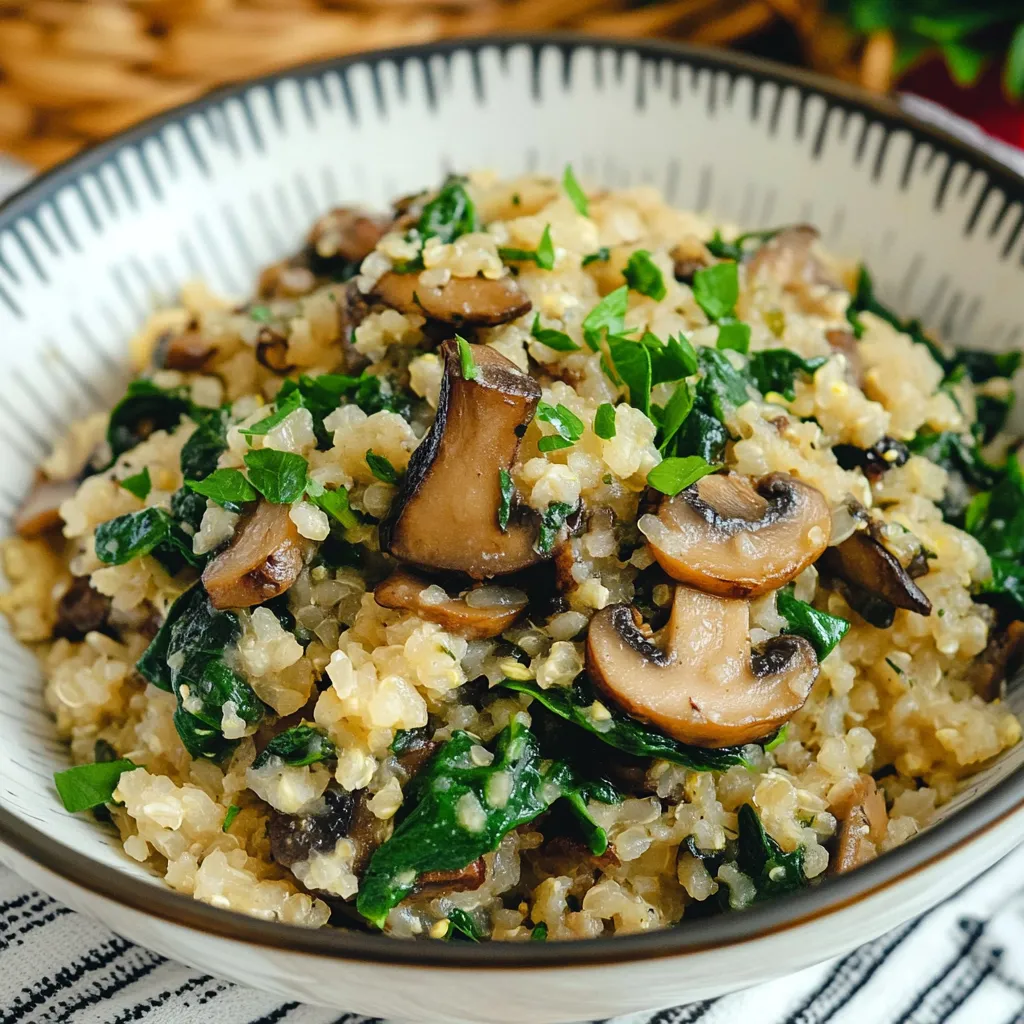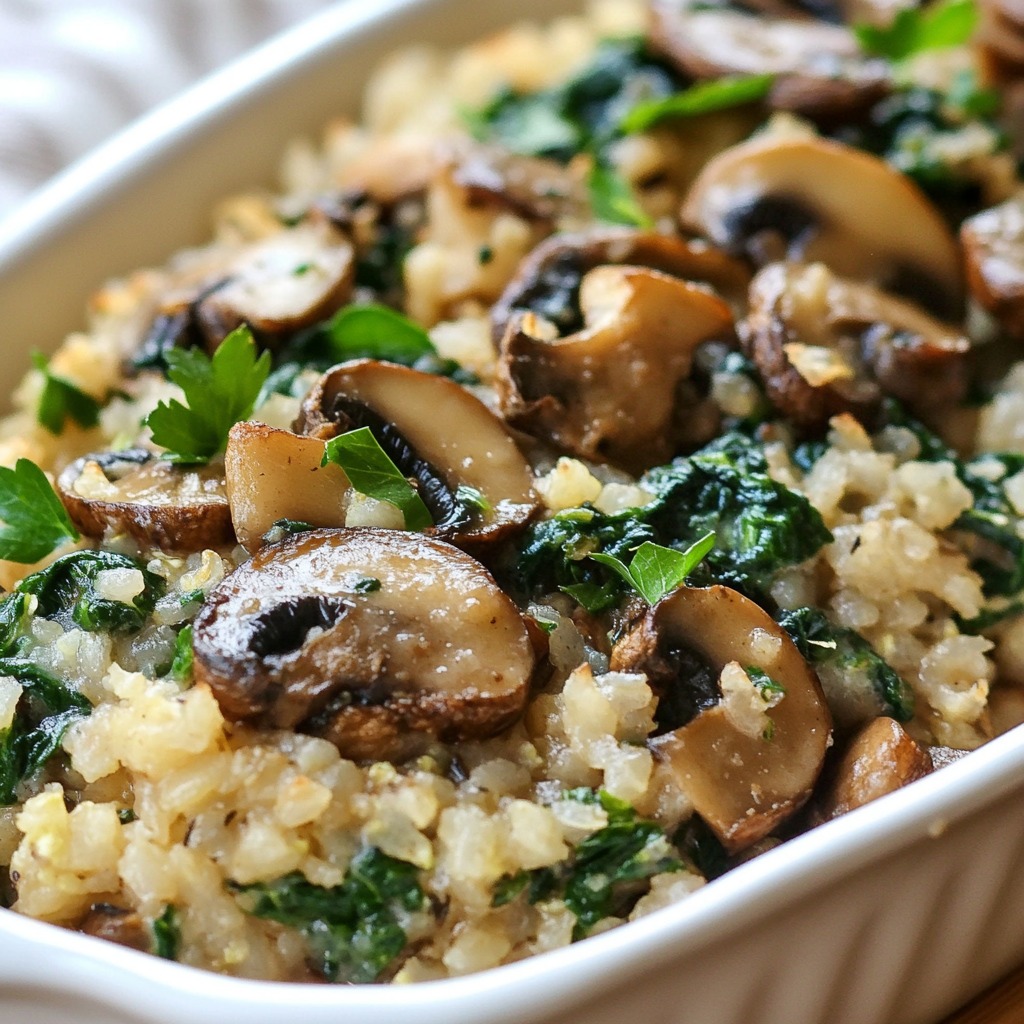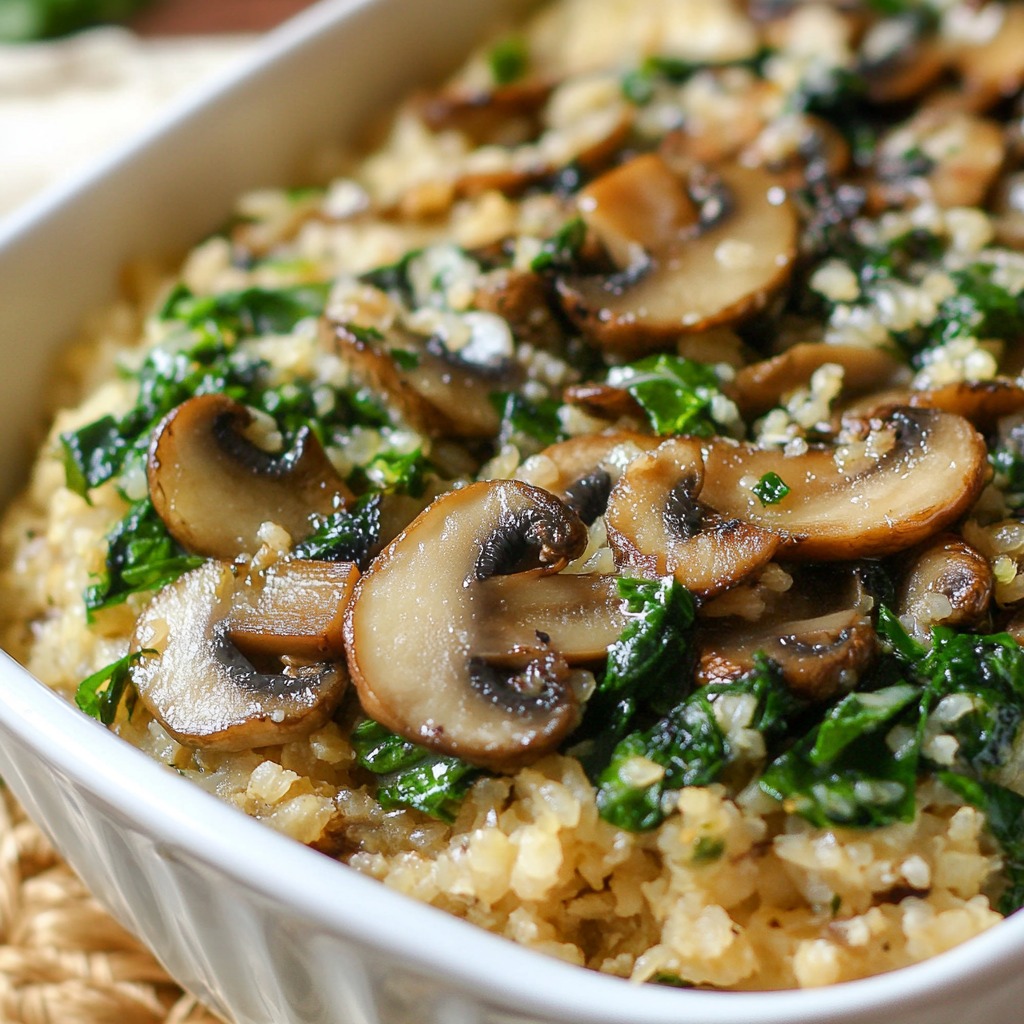 Pin it
Pin it
Transform humble cauliflower into a flavorful, satisfying dish that'll make you forget you're eating low-carb. This mushroom and spinach cauliflower rice brings together earthy mushrooms, fresh spinach, and aromatic garlic in a dish that's become my go-to side when I want something light yet satisfying. After discovering this combination during my own low-carb journey, it's revolutionized how I think about vegetable-based sides.
Just last week, I served this to my skeptical brother-in-law who swears by traditional rice. After his second helping, he admitted he couldn't believe it wasn't grain-based. The secret? Getting that perfect caramelization on the mushrooms before combining with the cauliflower rice.
Essential Ingredients and Selection Tips
- Cauliflower Rice: Fresh or frozen both work, but I prefer frozen for convenience and consistent texture
- Mushrooms: Choose firm, unblemished cremini or button mushrooms with dry caps
- Fresh Spinach: Look for crisp, bright green leaves without any yellowing
- Garlic: Fresh cloves will give you the best flavor; pre-minced just isn't the same
- Coconut Aminos or Soy Sauce: Adds depth and umami; choose coconut aminos for a gluten-free option
I've learned that selecting mushrooms is crucial - they should feel firm and smell earthy, never slimy or musty. This simple check ensures your dish will have the best possible flavor.
Detailed Cooking Instructions
- Mushroom Preparation:
- Start with properly cleaned mushrooms - wipe them gently with a damp paper towel rather than washing under water. Slice them evenly for consistent cooking, about 1/4 inch thick. I've found this thickness allows them to caramelize beautifully without becoming too chewy.
- Cauliflower Rice Process:
- Whether using fresh or frozen, the key is removing excess moisture. If frozen, let it thaw completely and squeeze gently in a clean kitchen towel. For fresh, pulse in a food processor until rice-sized, then proceed with the same moisture removal. This step prevents your dish from becoming soggy.
- Vegetable Sauté:
- Heat your pan until it's properly hot - a drop of water should dance across the surface. Add your oil and minced onions first, letting them become translucent before adding the mushrooms. Give those mushrooms space to brown; overcrowding leads to steaming instead of caramelizing.
- Building Flavors:
- Once your mushrooms have developed a golden color, add minced garlic and stir until fragrant. This is where the magic happens - the garlic infuses the oil with flavor that will carry throughout the entire dish. Add your cauliflower rice and soy sauce, stirring to coat evenly.
 Pin it
Pin it
Growing up, rice was a staple at our family table. When I started exploring low-carb options, cauliflower rice seemed strange at first. But after perfecting this recipe, I've found it satisfies those comfort food cravings while keeping meals light and nutritious.
 Pin it
Pin it
I've come to appreciate how this dish transforms humble vegetables into something truly crave-worthy. Whether served alongside grilled chicken or enjoyed on its own, it's proof that eating low-carb doesn't mean sacrificing flavor or satisfaction. The key is treating each ingredient with care and allowing their natural flavors to shine through.
Frequently Asked Questions
- → Can I use fresh cauliflower rice instead of frozen?
- Yes, you can use fresh cauliflower rice. Simply pulse fresh cauliflower florets in a food processor until rice-sized and use as directed in the recipe.
- → How long does this stir-fry keep in the refrigerator?
- The mushroom cauliflower rice stir-fry can be stored in an airtight container in the refrigerator for up to 3-4 days.
- → What can I serve with this stir-fry?
- This stir-fry works well as a main dish on its own or can be served with grilled chicken, tofu, or shrimp for extra protein.
- → Can I add other vegetables to this recipe?
- Yes, feel free to add vegetables like bell peppers, carrots, or snap peas. Just add firmer vegetables earlier in the cooking process.
- → Is this recipe gluten-free?
- To make this recipe gluten-free, simply substitute regular soy sauce with tamari or certified gluten-free soy sauce.
